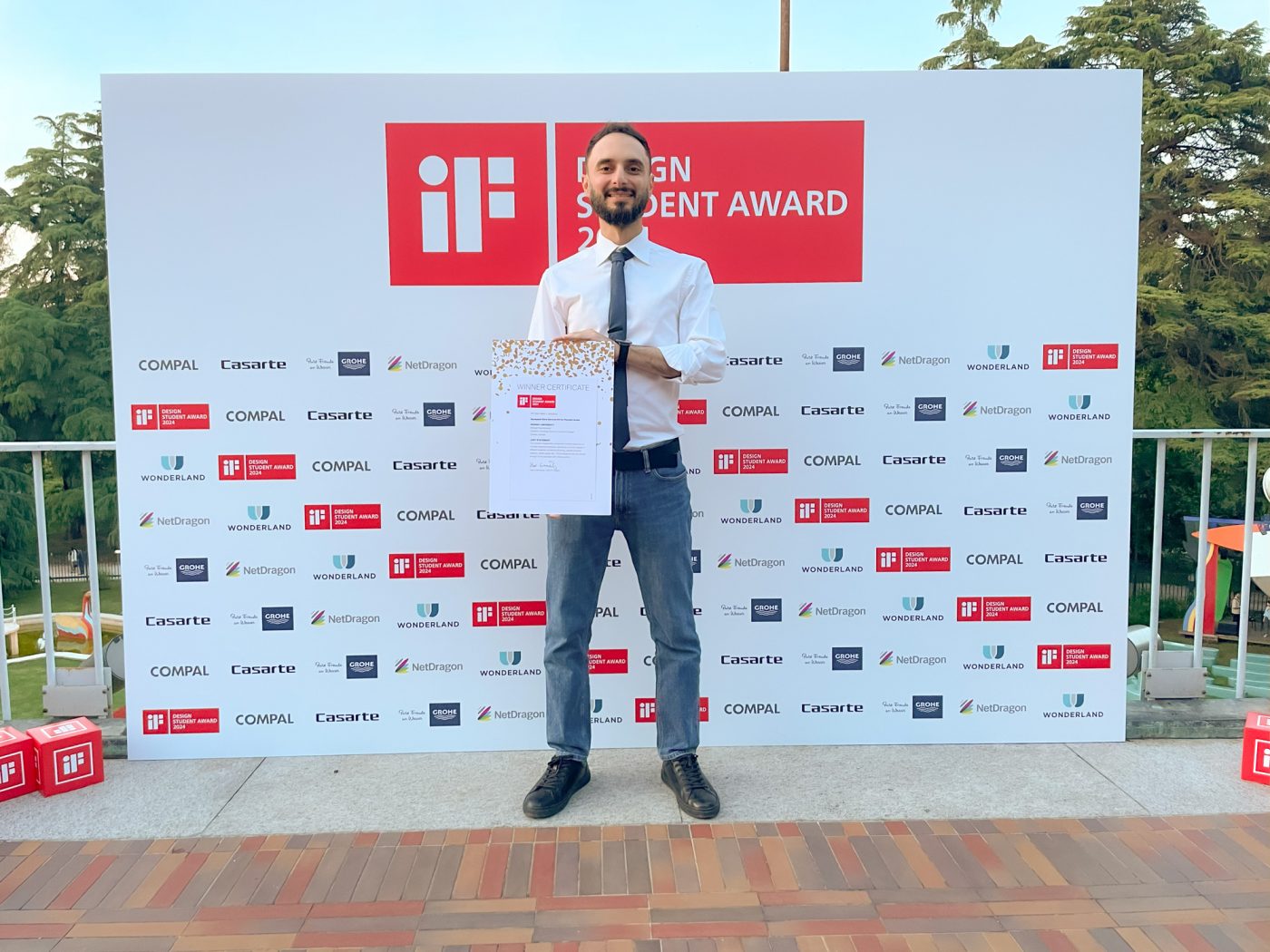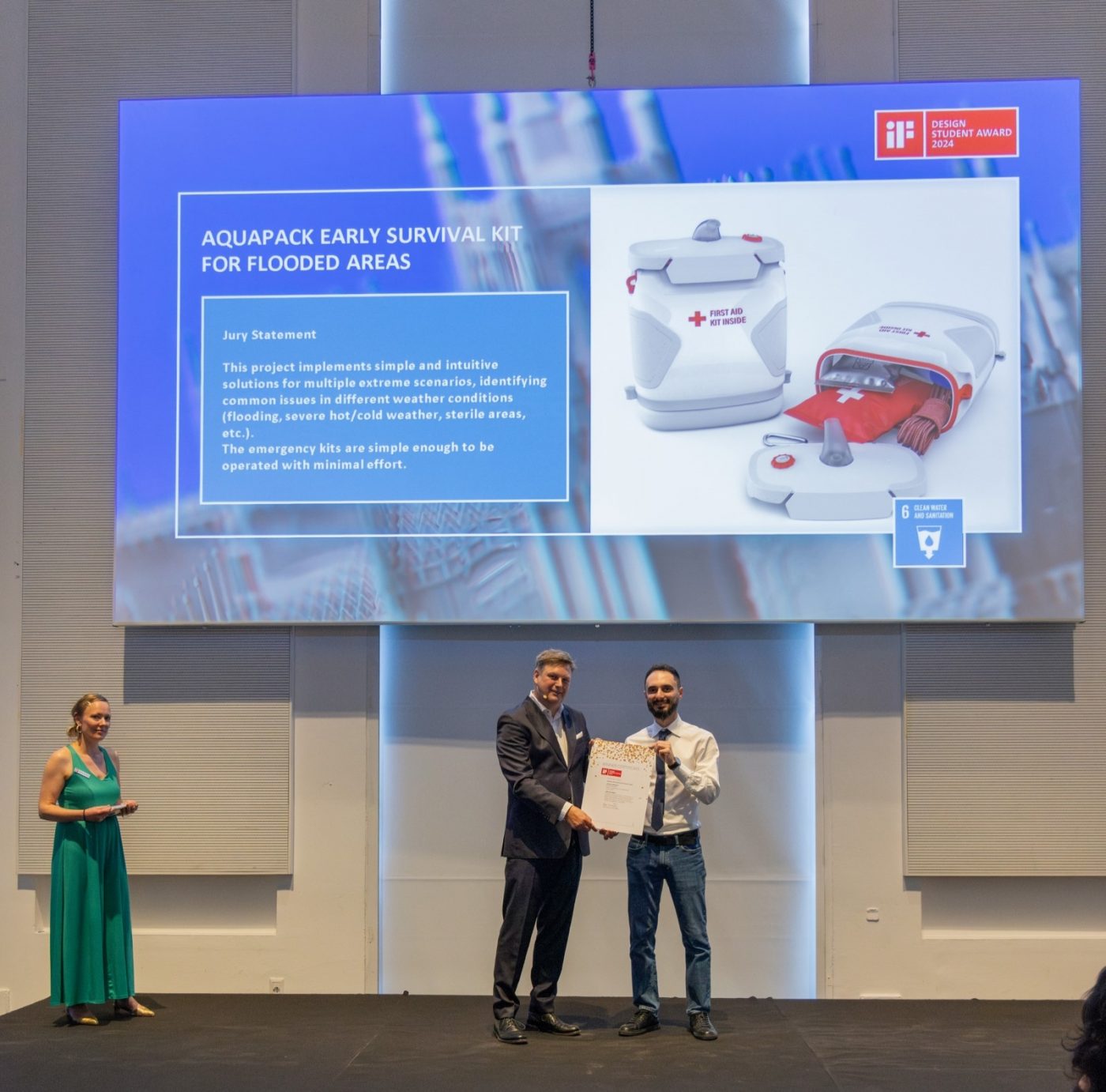Designing a Life-saving Flash Flood Device
Tyrone Burke
In decades past, the mention of flash floods and fatalities rarely frequented Canadian news coverage, but today, it’s on the rise in headlines.
With the climate changing, rising temperatures mean more evaporation and moisture and, ultimately, an increase in rainfall. The more rain, the greater the risk of flooding happening more consistently, spontaneously and seriously – damaging infrastructure and impacting more Canadians’ daily lives.
And when flood waters rise, survivors can be stranded for days.
In the crucial hours it can take rescue crews to reach them, survivors need to stay warm, keep hydrated and treat any wounds the emergency has inflicted.
The Aquapack Early Survival Kit provides people with a lifeline for just that.
Designed by Behzad Rashidizadeh, the self-contained emergency kit includes a simple water filter, a first aid kit and a radio telemetry device to communicate survivors’ location to rescue teams. And it floats, so survivors can easily transport it from one place to another.
The Aquapack began as a class project in Carleton’s School of Industrial Design, and was recognized with a 2024 iF Student Design Award at a ceremony in Milan, Italy.

The iF Design Awards are a global competition, and recognize some of the best designs from around the world. Last year, the awards received more than 11,000 submissions from 72 countries, and they place an emphasis on a design’s global impact.
The jury cited the Aquapack as a simple, intuitive solution that helps people navigate multiple types of extreme weather events. As a fourth-year student in Carleton’s Bachelor of Industrial Design program, Rashidizadeh conceived the idea and design in a class project on water filtration.
“With global warming, there are more flash floods occurring in places they didn’t used to happen. The year I started this project, floods in Germany and Libya caused a lot of damage. It made me realize we need some kind of a rescue kit that is specifically designed for flash flooding,” Rashidizadeh says.
A Simple Yet Extremely Solution-Oriented Design
During the design process, Rashidizadeh spent many hours researching and thinking through the various ways that a flood survivor might interact with a rescue kit in an emergency. He sought to create a design that would help people meet their basic needs if a flood caught them by surprise.
“Sometimes floods happen at night, and it is just too stormy and rainy to search. So, I came up with a list of things that are absolutely necessary to survive the first 24 to 48 hours after a flood—until the rescue team can arrive and conduct a search,” he says.
The Aquapack is a multi-functional design that uses a straw filter to make flood waters safe to drink. The contents of the kit can be emptied to create a water filter, which is fitted over the top of the Aquapack container. It can be filled with water and used as a water bottle, or hung upside down as a gravity filtration system to wash with.

The Aquapack also includes a short rope, so it can be lowered into flood waters without touching them. Rashidizadeh made this design choice because floods can take out electricity infrastructure, and their waters can sometimes carry a charge.
Most of the time he spent creating the design was dedicated to researching what people experience when a flash flood occurs.
“If you spend the time to really understand an environment, your solution to a problem will usually be user-centered,” says Rashidizadeh. “The Aquapack is a very simple design—it is really just a water bottle—but I had to pay attention to all of the little details and the ways a user would interact with the product.”
Future Endeavours for Problem-Solving Real Issues
Rashidizadeh hopes the recognition from the iF Design Foundation will help him stand out as he launches a career at a design studio, and he calls the award a big encouragement to continue to try to solve problems with design.

It is not the first time that Rashidizadeh has been recognized for a design that helps people. He is a mature student with work experience as a designer. In 2014, Rashidizadeh was a finalist for Dyson Award USA for his design of hands-free crutch that improves the mobility of people with lower leg injuries.
His real-world experience in industrial is part of the reason he chose Carleton for his studies.
“Carleton teaches a problem-solving approach that stands out from the crowd,” he says. “Designers don’t just take an existing solution and make it more aesthetically pleasing, they work alongside engineers and scientists. You take a leading role and get involved shaping the solution. This approach to design is much more stimulating, and I enjoy it a lot more.”